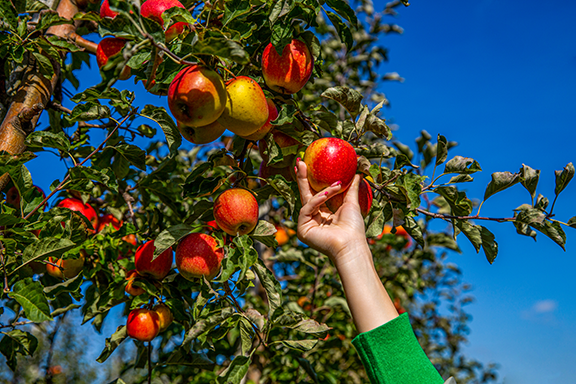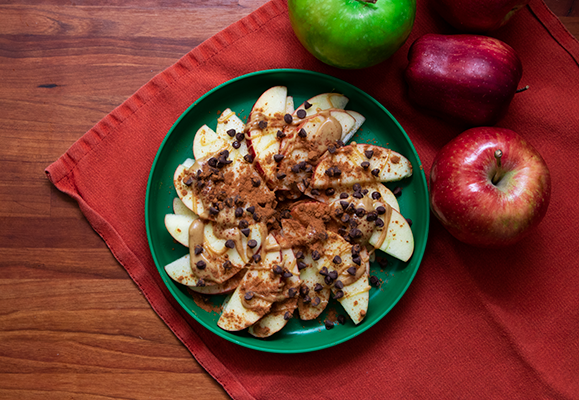Did you know that you could spend a quarter of your life just trying different apples? If you tried a different apple every day, it would take you about 20 years to try them all. That’s because there are more than 7,500 types of apples! 2,500 varieties of apples are grown here in the United States. Apples are a great source of fiber that can be consumed fresh or dry, or can be made into apple sauce, apple juice or jams.
From late August to mid-December, orchards in Georgia produce the freshest and best apples! North Georgia is a fantastic place to go apple picking, especially in Ellijay, where our Gilmer County team is hard at work helping SNAP-eligible Georgians eat healthier and make the most of their SNAP dollars. Read on to find tips about cleaning, storing, cooking, and selecting apples.

Selection
If you are making a trip to the grocery store, market, or orchard, here are some suggestions for picking the best apples!
- Choose apples that do not have bruises, browning, skin breaks, and decayed spots. This can be a sign of spoilage like mold or rotting. [1]
- Firm apples have the best quality. Soft apples can have a coarse texture and overripe flavor. [1]
- The little brown spots you might see on apples are called “russeting” and do not impact quality! [1]
Cleaning
- You should always wash your hands before and after handling fresh produce. Apples can simply be cleaned by washing them thoroughly under cool running water without the use of soap. [2]
Storing
- Apples can be refrigerated in a plastic bag away from strong-odored foods at or below 40 °F for up to 3 weeks. [3][4] Poke holes in the plastic bag for ventilation. Poking holes in the bag will help the apple retain crispness and moisture. [4] Cooked apples can be stored in the freezer (0 °F) for up to 8 months. Whole apples can otherwise be stored at room temperature for up to a week. [4] Once apples are cut, they need to be refrigerated!
Cooking
- Ideally, fresh apples are the preferred choice for their superior quality, while canned or frozen apples, although lower in quality, can still be a budget-friendly alternative, especially when used in recipes like pies and cakes. [4]
- Apples can be cored and sliced into rings, wedges or chips.
- Apples are eaten raw, pureed to make applesauce, and dried to make chips.
- Apples can be baked, cooked on the stovetop, or even fried.
Want to try nachos without the salt, but all the crunch? Try our Yummy Apple Nachos!

Our Apple and Veggie Omelet is another great recipe to include more apples in your diet.

Apples can be used in a variety of infused water recipes and pair well with cinnamon, citrus, cranberry, ginger, lychee, mango, rosemary and so much more. See how to do it yourself: Apple Cinnamon Infused Water.
Remember that saying “an apple a day keeps the doctor away”? There may be some truth to that, as apples give us 20% of our daily fiber, vitamins, and minerals to keep us healthy! [3] Stay posted for our next blog in the “How to Use Seasonal Produce” series.
Written by Claire Hawkins, MS/DI Student and Holly Cothern, Dietetics Student | Edited by Jung Sun Lee, PhD, RDN; Tristen T. Webb; the nutrition education team